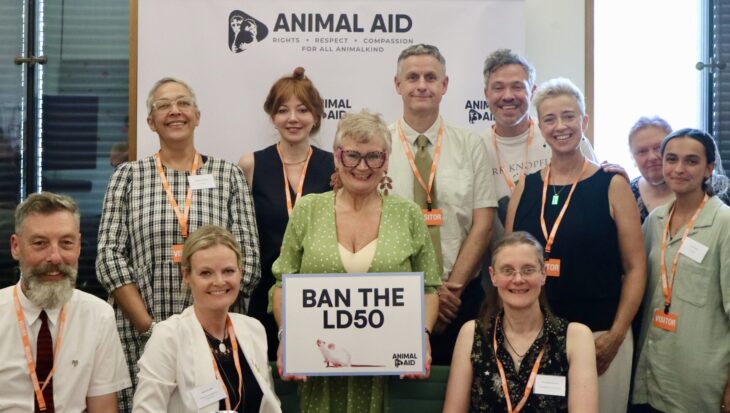Animal Aid in parliament to discuss ending animal tests
Yesterday, Animal Aid hosted a roundtable in Westminster, to meet with MPs and other invited guests to discuss the ending the LD50 and other animal tests.
Posted 02 Jul 2025

The first person you should contact is the organiser. You can email, write or speak to them on the phone or face to face.
Below is an example of a letter you can send to a person or organisation planning to cull foxes in your area. If you can, please personalise the words, as this helps your letter have more impact, especially if other residents are also writing to them.
Dear [Name]
I was shocked to see that [who] are planning to cull foxes at [location]. As a local resident I am asking you to reconsider.
I, like many people, enjoy seeing foxes and other wildlife in our local area. To persecute and kill these beautiful creatures is likely to be extremely unpopular with people.
Methods used to cull foxes are cruel and can inflict terrible suffering. Shooting frequently leaves foxes wounded and unable to hunt, which can lead to a slow and painful death. Trapping a fox and then releasing them in another area can cause extreme stress from being removed from their own territory. If a female fox with young cubs is killed or injured, her babies can starve to death.
As well as being cruel, killing foxes does not work, so it is a waste of resources. This is because foxes are territorial, so if one is killed another fox will enter their territory, potentially leading to an endless cycle of culling.
There are many cost-effective humane alternatives to culling, which effectively deter foxes from an area. These are explained in the following resources:
They also contain contact details for several companies that specialise in humane wildlife deterrence.
Thank you for your time, and I look forward to your response.
Yours sincerely,
[Name]
Local resident
Tips
Yesterday, Animal Aid hosted a roundtable in Westminster, to meet with MPs and other invited guests to discuss the ending the LD50 and other animal tests.
Posted 02 Jul 2025

Have you heard? A breathtaking arts initiative, ‘The Herds’ will be arriving in London this Friday.
Posted 27 Jun 2025
